Are 360 Cups Ok? with Dawn Winkelmann, MS, CCC-SLP
- What 360 spoutless cups are and how they differ from open cups
- Which independent drinking milestones your baby can accomplish by 12m
- How to promote open cup drinking…even whe you want to avoid spills
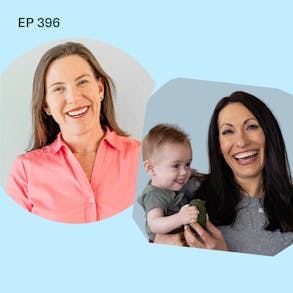
LISTEN TO THIS EPISODE
Episode Description
Are 360 spoutless cups the same as open cups? Or are they sippy cups? Do they hinder development or confuse your baby when learning to become an independent drinker? In this episode pediatric swallowing expert and speech language pathologist Dawn Winkelmann will share her thoughts about 360 spoutless cups and whether or not they work with for baby-led weaning.
About the Guest
- Dawn Winkelmann is a speech language pathologist and pediatric swallowing expert
- She is the award winning product designer for the ezpz feeding gear products, including their Tiny Cup
- Dawn promotes open cup drinking over the use of sippy and spoutless cups
Links from this Episode
- Get open cup blogs from https://ezpzfun.com/pages/blog
- Click here for Dawn’s website
- Follow Dawn on Instagram @msdawnslp
- Baby-Led Weaning with Katie Ferraro program with the 100 First Foods™ Daily Meal Plan, join here: https://babyledweaning.co/program
- Baby-Led Weaning for Beginners free online workshop with 100 First Foods™ list to all attendees, register here: https://babyledweaning.co/baby-led-weaning-for-beginners
Other Episodes Related to this Topic

Latest Episodes
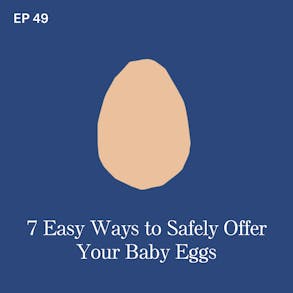

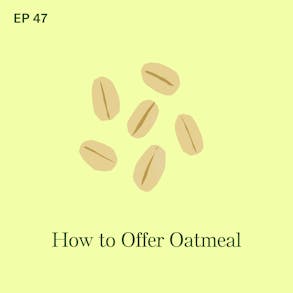
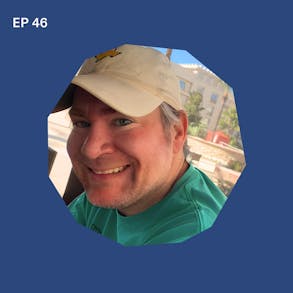
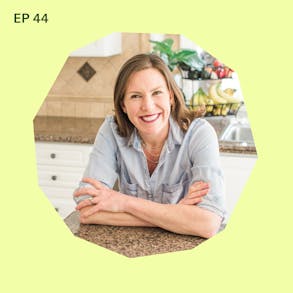
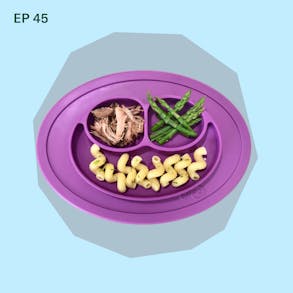
Katie Ferraro (1s):
As we head into the new year, I know there's a lot of parents listening who are committed to offering their babies a wider variety of foods with babies, who, let's be honest, can't talk back yet they don't have a lot of say in what they eat. And it is so easy for us as busy parents to get stuck on those simple starter foods like avocado, banana, and sweet potato If. you feel like you're feeding your baby the same foods over and over and you're looking to really push their palate in the new year. If, you wanna open your baby up to a wide array of foods and flavors and tastes and textures that you are like I know they can be eating them. But I just haven't figured out how to make that happen yet. My 100 First Foods daily meal plan is the one stop Baby-Led Weaning solution that I designed to take the guesswork out of what you feed your baby next.
Katie Ferraro (48s):
So I recently redid our entire 100 First Foods daily meal plan week by week, day by day working to streamline the recipes per busy parents. I really wanted to bring the food cost down but I wanted to make sure that more babies out there in the new year are eating 100 different foods safely before they turn one. My friend's baby Ezra, he's almost done with his meal plan. He's 10 months old now we're on week 17 of the 20 week meal plan. I know that sounds insane, but every week his mom knows exactly which five new foods he's going to be eating. This baby just dominated Christmas dinner. He was eating meat and bitter vegetables. Everyone was in awe of how well he ate and that's because of Baby-Led Weaning.
Katie Ferraro (1m 29s):
So If, you feel like currently you're holding your baby back. I wanna invite you to join the Baby-Led Weaning with Katie Ferraro program. This program has my original 100 First Foods content library with all the videos that show you how to make the foods for your baby, plus my original 100 First Foods daily meal plan. So you don't have to think about what foods to feed your baby for the next 20 weeks. I literally did it for you. You can get started actually enjoying feeding your baby by going to babyledweaning.co/program. Again, that website head to babyledweaning.co/program to get started today and I hope to see you there. So, which foods are not safe for your baby to eat?
Katie Ferraro (2m 9s):
You guys know I'm usually all about sharing all of the foods that your baby can safely eat, but there are definitely some foods that we steer clear of when starting solid foods. I have a free feeding guide called 15 Foods Never To Feed that will help you recognize which foods aren't safe. Now most of the foods inside the 15 Foods Never To Feed Guide we avoid because they're choking hazards. But I'm providing you with tips on how to modify those foods so they are safe for your baby to eat. You can download the 15 Foods Never To Feed free feeding guide by going to babyledweaning.co/resources. Again, that's babyledweaning.co/resources to download your free feeding guide 15 Foods Never To Feed with the modification tips on how to make those foods safer.
Katie Ferraro (2m 58s):
Happy feeding.
Dawn Winkelmann (3m 1s):
When we compare sippy cups to 360 cups, it's, I know parents are looking for a lot of different solutions and I understand that and mostly the big solution is not having spills, but I like to remind parents that sippy cups and 360 cups both can potentially cause delays in damage.
Katie Ferraro (3m 21s):
Hey there, I'm Katie Ferraro, Registered dietitian, college nutrition professor and mom of seven specializing in Baby-Led Weaning here on the Baby-Led Weaning made easy podcast. I help you strip out all of the noise and nonsense about feeding leaving you with the confidence and knowledge you need to give your baby a safe start to solid foods using Baby-Led Weaning. Alright, what's the deal with 360 cups these spout less cups that you see they're on the shelves that Target or maybe your friends have them, they say they're dentist approved. Oh okay. Are they better than sippy cups? 'cause most parents know sippy cups are not ideal for babies and we wanna skip the sippy cup.
Katie Ferraro (4m 3s):
We wanna practice drinking out of the open cup but are the 360 cups Okay, today I've invited my friend and colleague Dawn Winkelmann on to talk about these 360 or spout list cups Dawn is a speech language pathologist. She specializes in Baby-Led Weaning, she's also a product developer and the feeding expert for the feeding gear company EZPZ and Dawn has a lot of thoughts about the 360 cups. I remember hearing okay, sippy cups aren't great with my oldest and I was trying to get her off of the bottle round one but I didn't want like the mess all over my house. Like I saw the 360 cup at Target, I bought it. I remember getting home and like trying to figure out how to use it myself. Like okay I have to press it down with the top of my lip while I'm sucking the liquid out with my bottom lip.
Katie Ferraro (4m 46s):
Like can my like eight month old baby do this? I don't even know. Fast forward, learned a lot more about infant feeding with six more kids and know a lot of the limitations of the 360 cups from a nutrition standpoint. I'm gonna share why I don't like these cups. And in this interview, Dawn is gonna share from a speech and language development standpoint why she doesn't like these cups. So with no further ado, here is Dawn Winkelmann come in to talk about R 360 cups. Okay,
Dawn Winkelmann (5m 16s):
Thank you so much for having me Katie. I appreciate it.
Katie Ferraro (5m 18s):
We're gonna be talking about cups today and I just wanna point out that I'm sure you know this, but the tiny cup that you designed for EZPZ, the world's first Baby-Led Weaning cup that is now won so many awards and is appreciated by so many families, it's five years old. Can you believe it? Like I remember you sending me the prototype for Gus and Hannah when they were starting solid foods. Like what has changed in the open cup world for babies in the past five years since you first launched the tiny cup for EZPZ?
Dawn Winkelmann (5m 42s):
Oh my gosh, I cannot believe it's been that long. It seems like such a whirlwind. Yeah, so unfortunately what's changed in the open cup world is a lot of knockoffs. Oh
Katie Ferraro (5m 52s):
Of course
Dawn Winkelmann (5m 53s):
Most parents, you know they don't know that we were the original silicone Baby-Led Weaning cup. Thank you so much for highlighting that kitty in that our cup is made out of a hundred percent food grade silicone and most of the knockoffs are not, which is a little scary. And I also see a lot more open cups on the market, you know, that have handles, which for me and, and, and obviously for you too, you know, we're in this Baby-Led Weaning world where we want to give, you know, babies the control and having handles on these open cups unconsciously kind of gives parents idea that baby can't drink from an open cup or, they need help drinking from an open cup and in reality, you know, handles are not needed because it's not developmental.
Dawn Winkelmann (6m 35s):
So I always like to give parents the, the idea about like holding your coffee cup like in, you know coffee mugs have like one handle, but imagine having another handle and then you bringing that hot cup of coffee like towards your mouth with two handles. Like it's very difficult and so, and which is obviously very difficult for babies too. So yeah, being able to, you know, have that first, you know, cup on the market, the tiny cup, having it be a cup that baby can put both of their hands around and be able to really motor plan that to their mouth is, is really important and I'm so excited to be the the first one out there on the market.
Katie Ferraro (7m 14s):
Well I feel like I'm always reminding people that you designed it. I'm trying, you always giving credit where credit is due and I think that cup is so important because prior to that remember we would practice open cup drinking with like with shot glasses that were like glass and not good for your baby developing teeth and gums or like these, there was a brand from somewhere else that had like, and it was plastic and, and we know that we're trying to not use certain materials including plastics in and around feeding gear. So again, the a hundred percent food grade silicone is so important and that's the tiny cup that you use for your baby from 6 to 12 months of age. Before we get into the 360 or the spotless cups, can you run down the benefits of open cup drinking for babies? In the intro to this episode I already shared about sippy cups and directed them to the podcast episode you did about the six reasons to skip the sippy cups.
Katie Ferraro (7m 57s):
So I don't think we need to talk about the sippy cups tell us why the open cups are ideal.
Dawn Winkelmann (8m 2s):
One of the first reasons is is like you were mentioning, you know, there's, there's other options for open cups now it's, you know, it's they're made outta plastic or metal or glass like shot glasses. And why I designed a silicone cup is because you know, as we are introducing solids, you know, usually that first tooth is also starting to emerge and I've had babies knock out they're, you know, first tooth because of using a shot glass or because they're using a metal glass or have, you know, plastic cups are not completely smooth. So sometimes that plastic can like nick their lip and what this does is obviously it you know, causes babies to bleed or lose a tooth or, but most importantly it associates pain with feeding and so we definitely don't want to do that with, so we wanna choose a nice soft cup to be able to start, you know, drinking from, we want that open cup to also, you know, not only have good material but we also want them to be able to have good visual development.
Dawn Winkelmann (9m 4s):
And so that's one of the things that is really important to me when we're looking at an open cup especially as compared to a 360 cup is that we want babies to be able to look inside and see the liquid so they can help regulate how to drink from it. So if we are, you know, holding that open cup for a baby with some breast milk or formula, you know, us as a caregiver is like holding that baby can look into the cup and be able to see it and be able to lean forward, take that sip and really start to learn how to regulate those sips. And so that's really important right now there's a lot of talk about using, you know, clear open cups and clear straw cups and I don't use see-through cups because If you start to change the color of the liquid IE if you're using breast milk and your breast milk color changes, which is absolutely normal or you're starting to decide that you're not gonna do breast milk and you're adding in formula if, you have a seed through cup, then babies sees that color change or that texture change and then can, you can really struggle with open cup drinking.
Dawn Winkelmann (10m 11s):
So that's why I designed the cup to actually have color on the outside but they can still look and see the top of the liquid and still be able to help with regulating how to be able to take those drinks but really not get caught up in being able to see all of the, the color or if you're starting to use that open cup in order to help your baby get off of bottles, then it's easier to kind of make that transition off of a bottle. If you're using an open cup that has some color on it so that as you're adding a little bit of water or maybe you're adding some cow's milk to it, your child is not gonna struggle with that transition. Another reason is swallowing development so there are no developmental milestones for a 360 cup.
Dawn Winkelmann (10m 54s):
There are developmental milestones for an open cup, which is so important for parents to know that a 6 month old baby should be swallowing from an open cup and drinking from an open cup held by a caregiver. They are engaging their tongue to elevate towards the roof of their mouth, which is very important to protect the airway and learn how to be able to swallow effectively. This is called a mature swallow. This is how you swallow Katie, how I swallow, how everyone that's listening swallows and we want babies to be able to elevate that tongue to the roof of the mouth to swallow, which we don't really see a lot of. We see more like suckling from those 360 cups. So there there's a a few reasons why we want to really hone in on those benefits of open cup drinking and help them maintain their swallowing and drinking milestones.
Katie Ferraro (11m 41s):
Hey We're gonna take a quick break but I'll be right back.
Katie Ferraro (13m 8s):
And I wanna talk a little bit more about those 360 cups. So sometimes we call them the spout list, cups manufacturers claim they're quote unquote dentist approved. I know for one, when I bought my oldest one of these I did so, 'cause I first time mom, I just thought it was safer than a sippy cup but then less messy than an open cup. And for the life of me I couldn't figure out how to use it. I remember like practicing myself, like pushing my upper lip down and then trying to suck fluid out with my bottom lip to get at work. It just seemed very antithetical to how babies learn how to drink out of an open cup. You've shared the benefits of open cup drinking. What's the deal with the 360 cups? Are they, are they first better than sippy, cups and I know you don't think they're as good as open cups, but like besides the shortcomings you've already mentioned, can you just share more about this as a category of cups trying to compete with open cups, which they really don't?
Dawn Winkelmann (13m 51s):
Yeah, when we compare sippy cups to 360 cups, it's, I know parents are looking for a lot of different solutions and I understand that and mostly the big solution is not having spills, But I like to remind parents that sippy cups and 360 cups both can potentially cause delays and damage. For example, every 4 hours in the United States, a child is rushed to the hospital due to facial injuries sustained by the overuse of sippy cups and sippy cups can cause issues with the tongue and lips and 360 cups may cause issue with the jaw and teeth. Obviously all of these structures, lips, tongue and jaw teeth.
Dawn Winkelmann (14m 33s):
There are our articulators for good speech as well as for chewing and eating and drinking. And so a baby's facial development can be negatively impacted if they consistently suckle from a 360 cup, more specifically their facial musculature and their bone structure can be altered or even stunted from what they would've naturally developed into because of the overuse of these products. Drinking from an open cup, however, you know, allows those facial muscles and bone structures to grow normally, which helps support, you know, appropriate speech and feeding and swallowing. And so I encourage parents to skip the sippy cups but also in and skip the 360 cups because of that negative impact that can happen to the face.
Dawn Winkelmann (15m 17s):
And we really want, you know, your baby's adorable face shape to be what it's supposed to be. And so I just encourage parents to really use in a open cup and and help them facilitate that appropriate facial development.
Katie Ferraro (15m 30s):
So you're a feeding therapist, you also do work with babies who have feeding challenges? I work with typically developing babies. I get really frustrated when I see other social media accounts that really over pathologize what we call, for lack of a better term, normal infant nutrition and feeding. And so one example of this that I'm seeing now is promoting the use of the honey bear straw cup for typically developing babies. Can you talk about this as a practice? Like what's it intended for in feeding therapy and then how does that maybe, how does it or it does not comport outside of feeding therapy?
Dawn Winkelmann (16m 1s):
Yeah, so, so this is, this is really hard topic because of the fact that as your community knows, I design and promote and use baby-led products which include straw, cups and the honey bearer in it. Its essence is an adult-led cup, not a baby-led cup. This cup allows adult to control the speed and the amount of the liquid into a baby's mouth. Now with that said, I've occasionally used it with some of the babies that I work with with special needs, but with the general public, with my typical babies typically developing, we want to use an open cup or we want to use a straw cup and have that be a cup that baby can help control even though a caregiver or a therapist can eventually teach a baby how to have independent straw drinking with this cup because they have to squeeze it to be able to really suck from it at first, that can be very difficult for a baby to kind of motor plan that squeezing.
Dawn Winkelmann (17m 3s):
In fact, it's difficult for a lot of feeding therapists and parents, I've seen them squeeze too hard and they overfill their child's mouth. I see and it's so I, and then they film it and I'm watching it and I'm like, oh my gosh, you're,
Katie Ferraro (17m 14s):
Yes, you're shoving an unknown amount of fluid and this baby this is, this is so, so damaging to the child.
Dawn Winkelmann (17m 19s):
Yes and, and actually it can cause some, you know, babies to not wanna drink from straw cup and then that really puts parents in a compromised position to get off the bottle or for them to actually make their straw drinking milestones so we want to make straw drinking a way for baby to control. We want it to be easy for them to transition from one straw cup to another. I also find, you know, when families use the honey bear then they're like, I can't get them to transition to a regular straw cup. Yeah, it makes that difficult. Another thing is the straw is so long and you know, if you've heard me on Katie's podcast before, everyone you know, I'm talking about how important it is to have a very short straw so that too much of the straw doesn't go into the mouth and that's sometimes really hard to control with the honey bear.
Dawn Winkelmann (18m 8s):
And so that's, that's why I personally don't use a honey bear with my Baby-Led Weaning clients. I have used it with some of my clients with special needs, but because of the fact that you initially it's an adult led product, I, I don't use it and I really want babies to initiate that. We want our babies to learn how to drink independently from a straw cup. So it's designed a straw called the mini cup straw training system, which has a straw that has some sensory bones on the straw so that it really helps to encourage babies to put their lips at the very tip of the straw to really help with that tongue elevation. A lot of the babies that I see in these videos that you're talking about, Katie, it's just like their whole mouth is on the straw so they have anywhere between one inch to two inches of the straw inside of their mouth.
Dawn Winkelmann (18m 57s):
Well that's essentially a sippy cup so that child is suckling and not actually drawing up the liquids and really using their lips to actually promote good straw drinking. So, so yeah, it's kind of a touchy subject I know out there but I, you know, I'm not a fan so I don't use 'em.
Katie Ferraro (19m 15s):
Hey, we're gonna take a quick break, but I'll be right back.
Katie Ferraro (21m 2s):
And I think that open cup stuff is new to a lot of parents. They're like, whoa, wait a minute. I thought thought we're like here to focus on eating food and now have to worry about the open cups. So tell us Dawn, where can our audience go to learn more about using an open cup? If we wanna steer clear of sippy cups and Spout list cups, where's a good resource to learn more about open cups that you can share?
Dawn Winkelmann (21m 19s):
So they can have wrote several blogs on this at ezpzfund.com and kind of talking about the benefits of open cup drinking and how you can really help your baby no matter what age your child is. You know, sometimes, you know, parents dunno about this and the child has already had their first birthday and they still wanna learn how to be able to get their child to be able to be independent with open cup drinking. so they can get that information at ezpzfund.com. They can also go to my website, msdawnslp.com and then you can also check out some of my videos, which are on my Instagram atomsdawnslp.
Katie Ferraro (21m 55s):
Well, Dawn, thank you so much. I really appreciate you coming on to chat about this. This is an interesting topic for sure.
Dawn Winkelmann (21m 60s):
Thank you Katie for having me.
Katie Ferraro (22m 2s):
Well, I hope you guys enjoyed that interview with with Dawn Winkelmann all about 360 or what they call spout cess cups. I am going to link to some of the products that Dawn does recommend. The open cup, the tiny cup that she designed for EZPZ, the mini cup and straw system for older babies once you get that open cup down. And I also wanna share a few other cup related resources that Dawn has developed that I have for you. The products that EZPZ makes. If you're looking for alternatives to the 360 cups, I'll link all of those up in the Shownotes page for this episode, which you can find at BLW podcast.com/396. And a special thank you to our partners at AirWave Media If, you guys like podcasts that feature food and science and using your brain. Check out some of the podcasts from AirWave.
Katie Ferraro (22m 44s):
We're online at BLW podcast.com. Thank you so much for listening and I'll see you next time. If you're interested in doing Baby-Led Weaning, but you're not exactly sure, like what does that mean? What does it look like? Where do I start? My online program called Baby-Led Weaning with Katie Ferraro has everything you need to give your baby a safe start to solid foods and get them to eat over 100 foods before they turn one, whether you're terrified of choking or maybe you've started but you feel like you're feeding your baby the same foods over and over 'cause you don't know what to feed next or you're looking for guidance on how to prepare foods safely for your baby's age and stage.
Katie Ferraro (23m 24s):
My program has exactly what you need. There's 5 hours of concise self-paced video training. You can knock this thing out during nap time this week. You also get access to my 100 first foods content library so you can see and learn exactly how to prep all of the 100 foods as well as my original 100 days meal plan. I've been refining this program for the last seven years. Just today, a mom wrote to me and told me that the 100 days meal plan has been a game changer for her busy lifestyle. When you join the program, you also get access to over 100 phase two combination food recipes. So you're gonna try out the trickier textures, push your baby's palate. And what's cool about these recipes is your whole family will enjoy them. So everything you need to give your baby a safe start to solid foods is inside of the program.
Katie Ferraro (24m 4s):
It's created by me, a Registered dietitian who specializes in infant feeding. If you're tired of hunting and pecking around the internet trying to piece this stuff together on your own, I put it all in one convenient place for you. I invite you to check out the Baby-Led Weaning with Katie Ferraro program. That's at babyledweaning.co again, that website is babyledweaning.co and click on program to learn more.
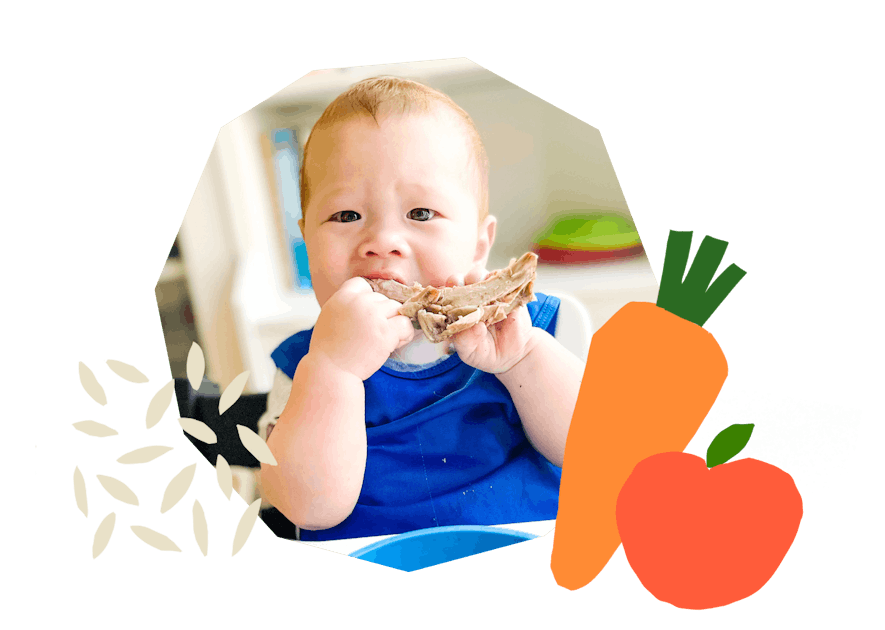
The Program Baby-Led Weaning with Katie Ferraro
A step-by-step digital program for starting solid foods safely and navigating the original 100 FIRST FOODS™ meal plan with baby-led weaning.
 EXPERT-LED, PROVEN APPROACH TO EATING REAL FOOD
EXPERT-LED, PROVEN APPROACH TO EATING REAL FOOD CONCISE VIDEO TRAININGS TO MASTER BABY-LED WEANING
CONCISE VIDEO TRAININGS TO MASTER BABY-LED WEANING 100 FIRST FOODS DAILY MEAL PLAN WITH FOOD PREP VIDEOS
100 FIRST FOODS DAILY MEAL PLAN WITH FOOD PREP VIDEOS
Baby-Led Weaning for Beginners Free Workshop
Is your baby ready to start solid foods, but you’re not sure where to start? Get ready to give your baby a solid foundation to a lifetime of loving real food…even if you’re feeling overwhelmed or confused about this next stage of infant feeding.
Get baby-led weaning recipes and tips delivered to your email inbox.

